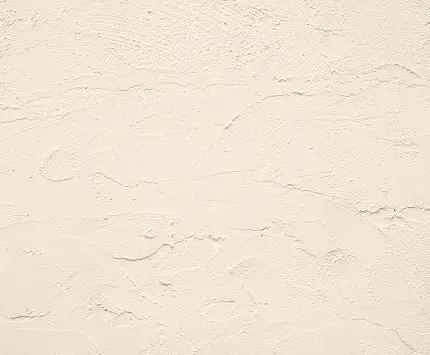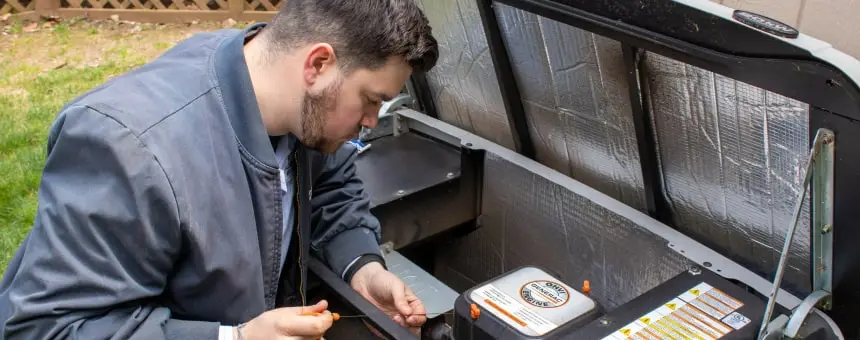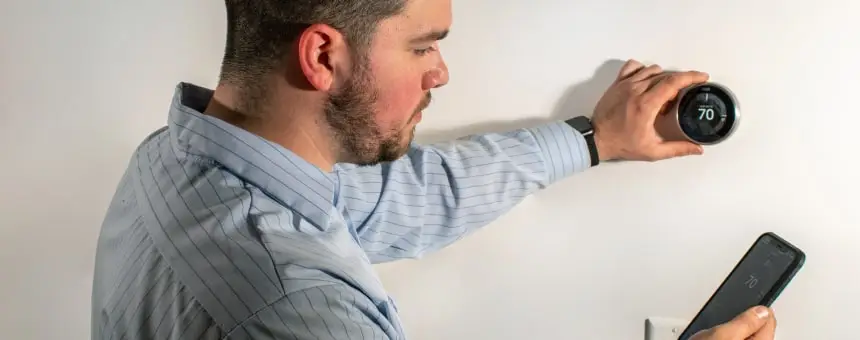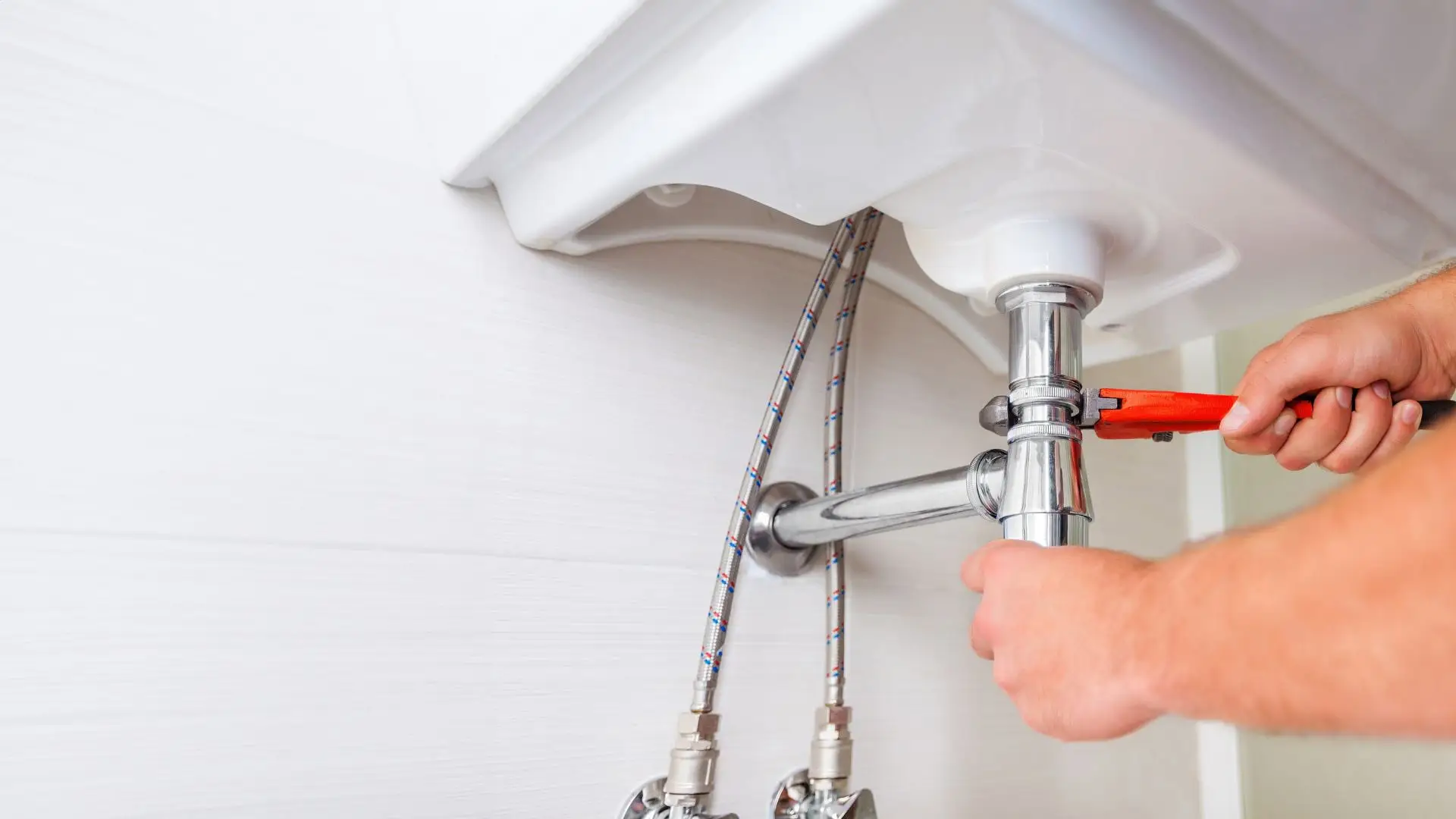Complete Guide to Hard Water and Water Softeners
The water we use every day is easy to take for granted. After all, we simply turn on a tap, and it’s there. Water isn’t always as simple or reliable as we’d like. Many people endure the daily nuisance of overly mineral-rich water, known as hard water.
At Bruni & Campisi, we hate to see hard water go untreated. Hard water can be hard on your system and your health — unless you own a water softener. We specialize in a variety of top-of-the-line water softeners. If you reside in Westchester County, NY, Stamford, CT, Greenwich, CT or the surrounding areas, come by and talk to us to learn more about water softener options.
Maybe you’re not sure if you need to talk with us. If the terms hard water and water softeners seem unfamiliar, you’re in luck — this guide covers everything you need to know about whether you suffer from hard water, how water softeners solve this problem and what types of softeners exist for your needs.
What Makes Water Hard?
You know water is a liquid, but if your idea of “hard water” looks something like ice, stop right there. Hard water isn’t physically hard. You can’t knock on it or stack it up. Hard and soft water distinctions refer to the levels of mineral deposits found in the water.
You might be surprised minerals are in your water. When fresh water falls as precipitation, it begins its journey. When it enters the water supply, this water contains no mineral contamination — it’s pure, clean water. As it enters the ground and starts to work its way through the rocks, it accumulates some of the minerals present in its environment.
The type of rocks through which the water percolates determines which minerals enter the water. For instance, limestone contributes calcium to water while dolomite donates magnesium. This process transforms the natural “soft” water into mineral heavy, “hard” water.
Types of Hard Water
Hard water describes water with unnaturally high levels of calcium and magnesium. In addition to these minerals, other dissolved metals occasionally also leech into the water. Other common water-soluble minerals include zinc, iron, manganese and aluminum. Other minerals like sodium and potassium enter water but don’t cause hardness. Essentially, levels of alkaline present and whether the minerals react to alkaline determine if the water assumes carbonite or non-carbonite hardness.
To refresh your high school chemistry knowledge, alkalinity refers to water’s ability to neutralize acids. Carbonite hardness results from compounds formed from a reaction to the alkaline present. Some such carbonites include phosphate, hydroxide, bicarbonate and carbonate. These carbonites sound scary, but carbonite hardness frequently gets broken down through boiling. Carbonite hardness is sometimes called “temporary” hardness.
Non-carbonite hardness occurs when the water combines with metals that don’t react to the presence of alkaline in the environment. Non-carbonite hard water remains hard even after boiling — it’s permanent, and, to be softened, it must undergo removal through other means.
Effects of Hard Water
Hard water wreaks havoc on almost everything it touches. Here, we’ll go over some of the ways hard water causes household problems. Any surface or material that comes into contact with hard water receives the trademark yucky, calcified, residue. Let’s start our rundown of common hard water problems with pipes.
-
Pipe Problems
Hard water affects your pipes as it passes through plumbing. As hard water carries a high quantity of calcium and magnesium, scales develop along the interior of your pipes. The two minerals fuse together to create a super-sticky combo. Much like cholesterol, the collected residues of the minerals build over time, closing in the area through which your water flows.
The build-up of calcium and magnesium drastically restricts your water’s movement. As the problem grows worse, the water flows become increasingly constricted. Under these conditions, hard water can eventually block your pipes, resulting in little or no actual release of water from your tap. At this point, many homeowners faced with a major problem: ruined plumbing.
-
Unwanted Residues
Because your plumbing is invisible, it’s easy to ignore damage happening to your plumbing — clogging goes on in the unseen interior of your pipes. What isn’t invisible is the trademark white film that covers your sink, bathtub, shower and other surfaces. The culprit is hard water.
Basically, anything hard water touches will develop a white scale over time. This unsightly scum clouds your glass fixtures and bathroom mirrors. Showerheads that used to shine with the perfect radiance of uncorrupted metallic beauty glisten no longer — a cloudy token of that old villain, hard water.
A hefty dose of white vinegar and elbow grease will eventually wear away those stains. Avoid this problem by never letting hard water come in contact with any vulnerable surface — or making sure your water gets softened so the problem doesn’t develop.
-
Unclean Feeling
Something else hard water touches is your skin. Many sufferers of hard water report chalky mineral deposits on their skin and hair following exposure to the water. This commonly occurs after a bath, shower, face washing or other direct physical contact with the water.
These pesky minerals leave your skin feeling dry and itchy. It’s common for irritations to develop as a result of prolonged exposure to hard water. Hair washed in hard water feels dehydrated and unclean. Hard water can defeat the purpose of a shower — to get clean. Don’t let hard water continue to make you feel like a dried out piece of chalk, get a water softener.
-
Bad Taste
Anyone who’s gulped down a glass of cloudy water knows what we’re talking about — the taste is terrible. Sure, there are those who claim to get used to it. We ascribe to the belief that forcing yourself to make unnecessary sacrifices isn’t a great plan.
Hard water affects the flavor of any drink you make — from hot chocolate to lemonade — and any food that requires water, like soups or pasta. A water softener fixes icky water lickity split. Don’t choke down chalky H2O.
-
Laundry Issues
Don’t forget your clothes. They get repeatedly soaked and washed in hard water and bear the battle scars. The high mineral content in hard water sucks the color from clothes. Moreover, these clothes gain an uncomfortable stiffness and feel itchy and dry.
Another aspect to consider concerns the actual washing process. Even detergents can’t clean your clothes properly — stains become virtually impossible to remove. The power of hard water to render soap ineffective makes all your washing around the home harder, not to mention your personal cleanliness.
-
Dishwasher Problems
The last hard water victim we’ll discuss relates to your dishwasher. As you learned before, hard water clogs up pipes like nobody’s business. As your dishwasher relies on a much smaller system of pipes, it suffers from an increased vulnerability to irreparable damage.
Not only that, hard water stains everything it touches and prevents soaps from working properly. Maybe you guessed where we’re going — your glasses, dishware and cutlery all get stained and improperly cleaned. That common cloudy look will haunt your glasses like a ghostly reminder of your hard water.
Health Research on Hard Water
While we’re discussing the detrimental effects of hard water, we should mention the debate regarding the health risks of hard water. Sure, hard water messes up everything it touches, but is it unhealthy? Right now, the official consensus is that drinking hard water poses no health risks. But what about benefits? After all, aren’t minerals good?
Minerals such as calcium, magnesium and zinc help maintain healthy body functions. Unfortunately, when these minerals are in your water, they don’t offer the same uptake as dietary minerals. At present, the verdict appears split on whether consumption of hard water contains health risks or even minor benefits.
For instance, the World Health Organization (WHO) stated at their Geneva Conference that hard water has no known adverse health effect. The WHO doubled down on their stance and suggested that the minerals found in hard water might provide positive nutritional benefits.
This claim fails to convince all scientists. Some medical researchers point to hard water as a possible cause of cardiovascular disease and other health problems. We regard hard water’s health benefits with skepticism and look forward to better research on identifying any health risks. Until the verdict comes back, we prefer to limit people’s exposure to hard water. After all, we know what it does to pipes, and that’s nothing to celebrate.
Do I Have Hard Water?
You’re likely looking at that glass of water in your hand a little differently now. Before you dump it, consult a United States water hardness map. Locate which water hardness zone you inhabit. This will help inform your decision as to how much mineral deposits affect your water.
How Water Hardness is Determined
Water hardness is measured in milligrams per liter (mg/L). Another system uses grains of hardness per part water. The grains system uses the measurement grains per gallon (gpg), so one gpg is 17.1 mg/L.
These two approaches use a weight-based measurement. It helps to look at the hardness map and see where you fall, but, unless you possess fancy chemical testing hardware, it’s difficult to determine your water’s exact level of hardness.
If you reside in a high hardness zone, you likely already feel the effects of living with hard water. Most people in the United States live with some amount of exposure to hard water. The scale of water hardness ranges from slight to extreme.
-
Slightly Hard
Slightly hard water lacks the telltale signs of exposure. There may be some spots or streaks on dishes or glassware. People with hard water coming through their pipes may notice effects on the body after physical contact with water.
-
Moderately Hard
Increasingly noticeable traces of mineral presence on water contact areas indicate moderately hard water. You can see it in the slow buildup of white stains along sink or bathtubs and deposits on glasses. Your skin may feel dehydrated after showers or baths.
-
Hard
Water that is hard will be tough to miss. Your bathroom and kitchen will show stains from hard water. A soapy ring of residue may linger around your tub, and your glass shower door is as foggy as the Scottish moors. You feel the physical result of contact: dry, itchy, unclean skin. Your laundry won’t get clean, and it seems stiff. You may notice your dishwasher and laundry machine take a toll.
-
Very Hard
When water is very hard, plumbing may stop working. Blocked pipes hold water and clog plumbing. There will likely be an unusual amount of problems with your appliances. You’ll notice stains on every surface exposed to water, and your body and hair will feel the effects of constant exposure.
-
Extremely Hard
At this end of the scale, anything’s possible. You might find a thick chalky goo coming out of your pipes. The collected accumulation can render water-fueled appliances useless. Forget about taking a shower without noticing the heavy chalky grime spraying down at you. The white, chalky residue seems to coat everything. You feel like you live in a calcium mine. It’s bad.
Hopefully, your exposure never reaches the nightmarish proportions present in this extreme state. Even if you deal with only minor levels of hard water, there’s no excuse for putting up with this easily solvable problem.
rish proportions present in this extreme state. Even if you deal with only minor levels of hard water, there’s no excuse for putting up with this easily solvable problem.
Speaking of which, we’ve finally come to the part about water softeners. You’re probably asking yourself all kinds of questions like: What kind of water softener do I need? What is the best water softener system? How much is a water softener for my home? How does a soft water system work?
Let’s start with the basics.
What Is Water Softening?
A water softener removes unwanted mineral compounds from your water. You remember that nasty duo of calcium and magnesium? With water softening system, those chemicals undergo extraction from the hard water. This results in much cleaner, softer water.
Other metals also get removed by this process, but will a water softener remove iron? The answer is yes and no. For ferrous iron in the water, a water softener will remove the iron through ion exchange. This electro-chemical process enables water softeners to work their magic.
Some types of heavier, iron rich water do not react so well to the process. Some softeners miss a significant amount of iron or allow heavy buildups to occur in the softener beds. Talk with us before relying solely on a softener for the purposes of iron extraction.
How Does a Soft Water System Work?
A water softener relies on molecular science to remove unwanted minerals. If that seems confusing, let’s start over: softeners use filters. Like your household water filter, softeners allow clean and soft water to pass through unencumbered while filtering the unwanted elements.
Unlike a traditional water filter, water softeners use a special filter, resin-rich in molecules, which attracts hard water minerals. When the hard water passes through the resin, minerals like calcium and magnesium get stuck to the resin molecules and remain in the filter.
This happens through a process of molecular ion exchange in which new bonds get formed with the highly combinable molecules found in the resin. Essentially, a swap occurs. The bad minerals get exchanged for the benign elements sodium and potassium. What emerges from the softener is nothing less than optimally soft water.
All those tiny molecules add up inside the softener. As these resin molecules get covered with minerals, another process occurs. A water softener will bath the resins with a brine water. This loosens them up and they float away, flushed down the drain. The rejuvenated water softener gets right back to softening. This incredible, self-sufficient process takes place roughly every week, depending on your usage and level of water hardness.
How to Choose a Water Softener
Selecting the right size water softener requires some basic calculations. If you’re wondering how to pick a water softener, start by considering your softening needs.
First, determine roughly how much water each resident of your house uses. Consider usage based on number of showers, loads of laundry and other activities. Once you arrive at a figure for your average occupant, multiply that number by the total number of family members residing in the house. Take this total number and multiply it again by the amount of water hardness in your water.
If you’re shooting in the dark trying to determine this number, call your local utilities provider. They should have the amount of water your home uses per month and year.
You can determine your water’s hardness level several ways: by knowing your grain/milligram per liter amount, which is determined roughly by your geographic location, or by augmenting this with your own assessment based on the types of observable factors we mentioned.
The total water usage multiplied by the hardness level will give you an assessment of how much grain removal you need a softener to accomplish. To give you some estimate, the average family of four uses 80 gallons of water per day. If they live in an average hardness territory, they’re looking at a 30,000-grain softener. At Bruni & Campisi, we can calculate your softness needs based on your water usage.
Type of Water Softeners
The last aspect of water softener selection concerns levels of automation. There are three main types of water softeners to choose from, each with a different price tag and features.
-
Manual
Manual softeners use a single vessel that houses the resins. They require you to manually empty the accumulated hard water compounds and replace the salts yourself. They do not self-replenish. Manual softeners require more hands-on work, but they come at a lower price. They occasionally get over-saturated and require you to empty them more often.
-
Semi-Automatic
Semi-automatic softeners, like manual softeners, come with the standard vessel tank. Unlike manuals, they have a brine tank and a time-controlled electric valve.
The brine tank stores the sodium responsible for mixing with the water to flush out the calcium and magnesium following a period of collection. The time clock initiates this occurrence. With some softeners, you can program this collection period, others have sensors for when its necessary to empty.
-
Automatic
Automatic softeners monitor your water use and adjust their behavior to match the needs dictated by their sensors. The control value releases when the system senses a release is required. Automatic softeners take all the muss and fuss out of the process.
How to Size a Water Softener
The market for water softeners keeps expanding. There’s a large variety of sizes for each type of system we mentioned above. The size water softener you purchase will depend on your family size, water needs and hard water tolerance level. If you aren’t sure what size will best suit your system, contact us — we can give you options on which system is best and what size is suitable.
Ask Us at Bruni & Campisi
At Bruni & Campisi, we take soft water seriously. You deserve the absolute best for your home and family, and we can help ensure the water they use to wash and clean isn’t hard. If you’re in the Westchester County, NY, Stamford, CT, Greenwich, CT or the surrounding areas, don’t hesitate to contact us for a free quote on a new water softener or let us know if you have questions or issues with your current model.

$150 OFF
Drain Clearing with Free Camera Inspection
Get this dealCannot be combined with any other offers or memberships. Cannot be used on past work. Must be presented at time of proposal. Some exclusions may apply. See website for licensure. Offers Expire: 07/01/2025


MEMBERSHIPS
Bruni & Campisi offers a complete maintenance program for all your needs.
VIEW MEMBERSHIPS

